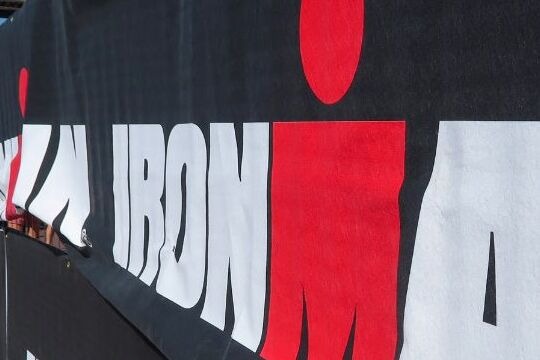Origins and Definition
An Ironman Triathlon is a 140.6-mil endurance race consisting of a 2.4-mile (3.86 km) swim, a 112-mile (180.25 km) bike ride, and a 26.2-mile (42.2 km) marathon run—completed consecutively within 17 hours. The event began in 1978 in Hawaii, born from a debate among athletes about whether swimmers, cyclists, or runners were the fittest. Navy Commander John Collins and his wife Judy combined three existing events—the Waikiki Roughwater Swim (2.4 miles), the Around-Oahu Bike Race (112 miles), and the Honolulu Marathon (26.2 miles)—into a single race. The winner, Gordon Haller (11:46:58), earned the title "Iron Man".
> Key fact: The distances (2.4 + 112 + 26.2 = 140.6 miles) symbolically matched the perimeter of O’ahu, Hawaii.
Ironman vs. Triathlon: Key Differences

While all Ironman races are triathlons, not all triathlons are Ironman events. Key distinctions:
1. Distance: Ironman is the longest standard triathlon format. Shorter variants include:
- Sprint: 0.5 mi swim / 12.4 mi bike / 3.1 mi run
- Olympic: 0.93 mi swim / 24.8 mi bike / 6.2 mi run
- Half-Ironman (70.3): 1.2 mi swim / 56 mi bike / 13.1 mi run.
2. Branding: "Ironman" is a trademarked brand (World Triathlon Corporation). Races of the same distance organized by others are called "iron-distance" events.
3. Cutoff Times: Ironman imposes strict limits:
- Swim: 2 hours 20 minutes
- Bike: 10 hours 30 minutes (from race start)
- Total: 17 hours.
Table: Triathlon Distance Comparison
| Type | Swim | Bike | Run | Total | Avg. Time |
|---|---|---|---|---|---|
| Super Sprint | 0.25 mi | 6.2 mi | 1.5 mi | 7.95 mi | 45-60 min |
| Sprint | 0.5 mi | 12.4 mi | 3.1 mi | 16 mi | 1-1.5 hrs |
| Olympic | 0.93 mi | 24.8 mi | 6.2 mi | 32 mi | 2-3 hrs |
| Half-Ironman | 1.2 mi | 56 mi | 13.1 mi | 70.3 mi | 5-7 hrs |
| Ironman | 2.4 mi | 112 mi | 26.2 mi | 140.6 mi | 12-14 hrs |
Legendary Ironman Destinations
- Kona, Hawaii, USA: Hosts the Ironman World Championship. Brutal lava fields, 95°F heat, and crosswinds make it the sport’s pinnacle. Qualification requires top finishes at other Ironman events or lottery selection.
- Nice, France: Features a mountainous bike course with 1,600m of climbing. The run along the French Riviera offers stunning views but little shade.
- Copenhagen, Denmark: A flat, fast course ideal for beginners. The swim occurs in the clean waters of Copenhagen Harbor, with enthusiastic crowd support.
The Challenges and Rewards
Challenges
- Physical Toll: Training demands 15–20 hours/week for 6–9 months. Long sessions include 5–7 hour bike rides and 2+ hour runs.
- Mental Fortitude: Athletes face "dark moments" of fatigue, pain, and doubt, especially during the marathon.
- Nutrition/Hydration: Calorie deficits and dehydration are common. Elite athletes consume 400–500 calories/hour during the race.
Rewards
- Elite Status: Only ~1% of the global population completes an Ironman. Finishers earn the title "Ironman" and a lifelong bragging right.
- Personal Transformation: Builds resilience, discipline, and a global community. Many use racing to fundraise for charities.
Tips for First-Time Ironman Athletes
1. Start Shorter: Complete a sprint or Olympic triathlon before attempting 70.3 or full Ironman.
2. Structured Training: Follow an 18–24 week plan. Prioritize bike endurance (50% of training time), followed by run (30%) and swim (20%).
3. Practice Transitions: Rehearse T1 (swim-to-bike) and T2 (bike-to-run) to save 5–10 minutes.
4. Test Gear/Nutrition: Use long training sessions to refine clothing, hydration packs, and fuel (gels, electrolytes).
5. Mental Prep: Visualize the course, accept discomfort, and break the race into manageable segments.
Planning for an International Ironman

- Register Early: Races sell out within minutes (e.g., Kona lottery). Fees range from $750–$1,000.
- Logistics: Arrive 4–5 days early to acclimate to time zones and climate. Recces the swim entry/exits and bike elevation profiles.
- Insurance: Use specialized providers (e.g., SportsCover Direct) for:
- Medical emergencies
- Event cancellation
- Bike/equipment damage
- Travel disruptions.
Records and Evolution
- Fastest Times:
- Men: Gustav Iden (7:40:24, 2022)
- Women: Lucy Charles-Barclay (8:24:06, 2023)
- Growth: From 15 finishers in 1978 to 260,000+ participants annually across 53 global events.
- Innovations: The 70.3 series (1991) made endurance racing accessible. New formats like T100 (100km total) now attract elites and age-groupers.
The Ironman Legacy
Completing an Ironman transcends athletic achievement—it embodies the mantra "Anything is possible" (Mike Reilly, "Voice of Ironman"). As Judy Collins, co-founder, reflects: *"Those distances connect you to their history in Hawai’i. They have special meaning". Whether you seek the iconic Kona finish or personal transformation, the journey reshapes body, mind, and spirit.
> Ready to begin? Start with a sprint triathlon, build gradually, and remember: the word "Ironman" belongs to those who dare to start—and refuse to quit.



















